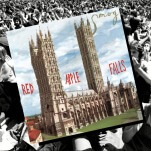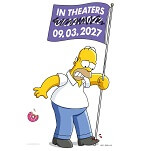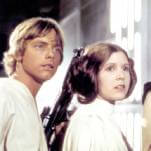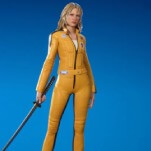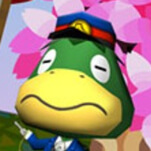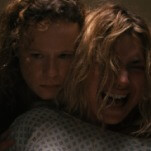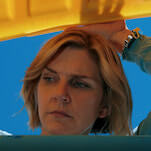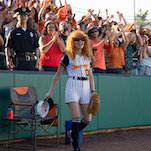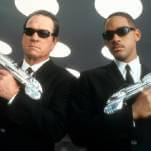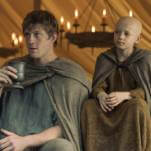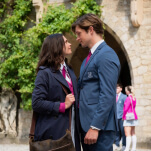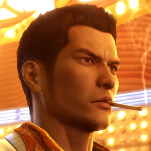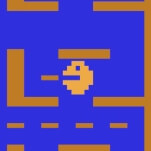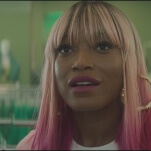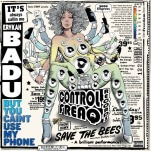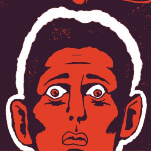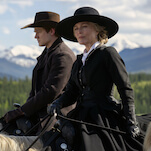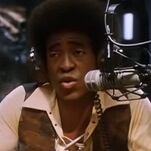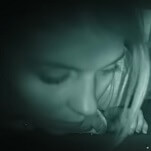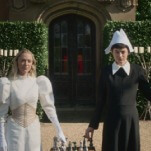Each week, Big Issues focuses on newly released comic books of significance. This week, they are John Constantine: The Hellblazer #8, written by Ming Doyle (The Kitchen, DC Bombshells) and James Tynion IV (The Woods, Batman And Robin Eternal) with art by Brian Level (The Mantle, Lazarus), Riley Rossmo (Rasputin, Drumhellar), and colorist Ivan Plascencia (Rasputin, The Astounding Wolf-Man) and Scarlet Witch #2, written by James Robinson (Airboy, Squadron Supreme) with art by Marco Rudy (Bucky Barnes: The Winter Soldier, Marvel Knights Spider-Man). These two issues use their magical concepts to do remarkable things with the comic-book page.
With the deaths of David Bowie and Alan Rickman this week, the world feels a little less magical in 2016. Labyrinth was one of my first exposures to the fantasy genre as a child, I was a huge Harry Potter fanboy throughout my adolescence, and Bowie’s music enlightened my early adulthood, so these losses feel personal in a way celebrity deaths normally don’t. These two men were masters of their craft, and by applying that craft to works of escapist fantasy, whether it was music or movies, the magic of those imaginary worlds became a part of their everyday personas. Alan Rickman isn’t actually Severus Snape, but he’s the image and voice I will always associate of Severus Snape. David Bowie is himself a persona created by the artist David Jones, but the magic of Bowie (and the various characters he’s portrayed through time) made him a transcendent cultural icon.
This week has me thinking a lot about the relationship between art and magic, and how superior artistry can make a person magical, not in the supernatural sense, but in the generally extraordinary sense. A broad definition of magic is “special power, influence, or skill,” and a piece of art can definitely achieve that with the right creative vision. John Constantine: The Hellblazer #8 and Scarlet Witch #2 are two comics that deal with the mystical corners of superhero worlds, and the creative teams’ craft and imagination elevate the narratives to magical heights. As pieces of escapist fantasy, they draw the reader deep into their spectacular environments with bold, immersive artwork, and both titles feature inventive page layouts that heighten the supernatural atmosphere by experimenting with structure.
John Constantine and Wanda Maximoff share quite a few similarities: They’re both magic-based characters in superhero universes who have recently received profile boosts by appearing in live-action projects, but haven’t had the best luck in comics in recent years. Wanda’s character has been a mess for nearly a decade, starting with her deadly mental breakdown in Brian Michael Bendis’ “Avengers: Disassembled” and continuing in more recent years with the muddying of her history in AXIS and Uncanny Avengers. Constantine hasn’t fared as badly, but he had a rocky transition into the mainstream DC Universe, and it took a while for DC to find the right direction for this less extreme interpretation of the former Vertigo mainstay. Their luck has changed, though, and now Marvel and DC are making smarter decisions with the characters to take advantage of the boost in popularity afforded by their appearances on the screen.
John Constantine: The Hellblazer has improved significantly since its overstuffed debut, with co-writers Ming Doyle and James Tynion IV easing up on the narration and trusting their art team to establish the tone and atmosphere of the story. The live-action character of John Constantine has jumped from his cancelled NBC solo series to The CW’s Arrowverse, and his new comic has a more CW feel with a heavier emphasis on humor and romance while still maintaining the horror elements that have defined the character. Much of the horror comes from main artist Riley Rossmo, who has a gift for creating creepy environments and dramatic demonic characters. For the last two issues, Rossmo has been providing finishes over Brian Level’s breakdowns, and Level is matching the ingenuity of Rossmo’s work in his striking layouts. This gives Rossmo more time to focus on the detail of his linework and designs, and it’s made these two recent issues a visual high point of an already gorgeous run.
After being forced out of his nightclub, Midnight, by new investors, voodoo sorceror kingpin Papa Midnite goes to John Constantine for help getting past the nightclub’s supernatural security system to steal a totem that will allow Midnite to regain control. John Constantine: The Hellblazer #8 opens with a full-page spread of the entrance to the nightclub, highlighting the art team’s ability to quickly establish a sense of place by presenting an environment that is hellish, glamorous, and bursting with life. The hostess design is an alluring mix of pretty and unsettling, and the woman is surrounded by two disfigured child helpers that help reinforce the terror. The hanging corpses are an especially effective recurring environmental element, serving as a constant visual reminder of the evil power that drives this glistening nightclub with their pained faces and postures and their sickly green coloring.
That opening splash pales in comparison to the two-page spread revealing the grand room of Midnight, which accentuates the sudden expansion of environmental scale by having the reader turn the comic sideways to view the image correctly. This effect is lost in the digital edition, but the changes in the page’s dimension still subtly indicate that there’s been a bigger visual shift. The art team achieves outstanding depth in this image, and the composition grabs the reader tightly by capturing the shot from the angle of a balcony above the room. By having the two demons positioned on the balcony in the foreground (given cool coloring by Ivan Plascencia so they don’t pull focus from the prominent action in the background), the artists are able to make the image more active. They’re not just showing the reader the room, they’re positioning the shot so that it feels like the reader is walking into the hall with those other patrons and getting hit by the grandeur of the environment at the same time.
The story and dialogue from Doyle and Tynion IV are engaging, but it’s the artwork that makes this issue so remarkable. When Constantine’s captured love interest, Oliver, is bitten by a venomous cockatrice, the hallucinogenic poison transforms the layout, creating a web of distorted panels with red streams of blood flowing in the gutters and vibrant gradients of neon colors in the background. It’s disorienting and menacing and very, very cool, and throughout the issue, Level, Rossmo, and Plascencia are dedicated to using the page design to reinforce the ideas in the story. The venom spread is followed by another two-page spread introducing Midnight’s new investor, Neron, and the layout is built around a large central panel in the shape of both a shield and royal crest, implying power and nobility. These daring, intelligent visuals decisions are where this title gets most of its magic, and it’s the same case with Scarlet Witch #2.
James Robinson does much of his best work with shorter, self-contained stories like the “Times Past” issues of Starman and The Shade and his 2014 short story in the Marvel 75th Anniversary Celebration one-shot, which currently stands as his best work at Marvel Comics. The concept for Robinson’s Scarlet Witch ongoing takes advantage of this strength by having the writer team up with a new artist for each self-contained issue, and it’s forced him to be more precise and economical with his work. He’s also making wise choices in adjusting his storytelling to best suit his artistic collaborators, which translates to evocative visuals that match the distinct needs of the story.
After just two issues, Scarlet Witch has established itself as one of Marvel’s most visually stunning books, from David Aja’s impeccably designed, eye-catching covers to the sumptuous interior art from Vanesa R. Del Rey and Jordie Bellaire on #1 and Marco Rudy on #2. Aja’s cover for this second issue is especially impressive, creating an optical illusion that is both an abstract close-up shot of Scarlet Witch’s face and a graphic image of this issue’s setting: the Greek island of Santorini. (If you don’t see Wanda’s face: the overhead view of the island is her eye, the hill her lips, the helicopter her nose, and the red border her cowl.) It’s an especially captivating image, and while the interior art has a dramatically different style, it’s not any less enchanting.
Marco Rudy’s approach to sequential storytelling is much more fluid than most superhero artists, with expressionistic layouts and rendering techniques that morph to fit the tone and ambiance of the story. Scarlet Witch #2 has the titular hero traveling to Greece to fight a classic Marvel villain who has been possessed by the spirit of the legendary Minotaur, and Rudy offers a labyrinth as the guiding principal for his art in the first half of the issue, using the space between panels to create a maze that continues from page to page. In the opening sequence, this involves separating the images with thick black lines that turn and curve around the page, but Rudy takes a gentler approach to the maze when Wanda enters the narrative.
A wide, bright establishing shot of Santorini marks a significant tonal shift from the dark, cramped opening, and the panels of Wanda talking to the goddess Hekate are laid along the bottom half of the page so that the space between the panels looks like the entrance to a maze, with each gutter a different path in the labyrinth. This general pattern continues for their entire conversation as panels of their conversation are laid on top of breathtaking shots of the city, with a brief break from this structure for Hekate’s recounting of the rise of this new Minotaur, which is accompanied by a wave of psychedelic imagery. That labyrinthine design disappears when Wanda finally fights the Minotaur and Rudy starts using more forceful layouts, spotlighting Wanda’s prowess in battle as she uses her magic to take down the rampaging villain. The contrast of hot and cold colors heightens the tension, and Rudy’s use of red combined with Kevin Wada’s sleek redesign of Wanda’s costume makes the heroine a pronounced visual element in the midst of the chaotic visuals.
In both John Constantine: The Hellblazer and Scarlet Witch, letterers Tom Napolitano and Cory Petit play essential roles in storytelling clarity by helping to guide the reader’s eye across the unconventional layouts. The final two-page spread of Scarlet Witch is a sterling example of how important the letterer’s role is. It would be easy to get lost in Rudy’s ethereal assortment of panels present between flowing strands of Wanda’s hair, but Petit’s lettering traces a clear path through the layout. That combination of craft, imagination, and clarity is where the magic of these titles stems from, and it’s a delight to visit the fantastic worlds built by these creators.

